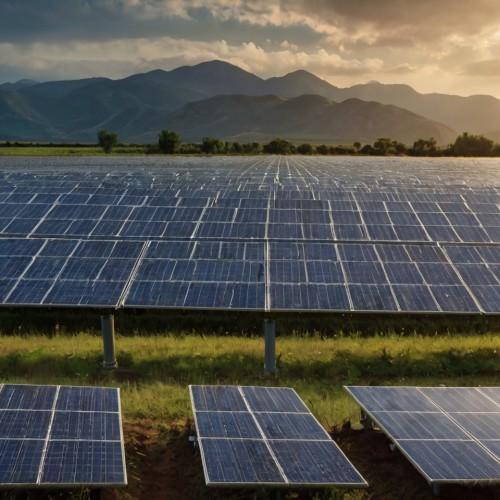Trends Driving Growth in the Renewable Energy Market

The global push toward sustainability is propelling the renewable energy market to new heights, as governments, businesses, and consumers increasingly prioritize cleaner energy sources. This transformation is spurred by innovations in technology, supportive policies, and a rising awareness of climate change’s impacts. Here’s a closer look at some of the major trends currently shaping the renewable energy landscape.
One of the most notable trends in the renewable energy market is the advancement in solar and wind technology. These renewable sources have become far more efficient and affordable due to improvements in photovoltaic cells and turbine design. Solar panel efficiency has increased significantly over the past decade, and manufacturers continue to enhance their durability and performance. Likewise, wind turbines are now being constructed with longer blades and higher capacity, enabling them to generate more power. As production costs decrease, the affordability of solar and wind makes them attractive energy sources, even in regions where they were previously cost-prohibitive.
Energy storage is another transformative trend. Renewable energy sources like solar and wind are intermittent, generating power only when the sun shines or the wind blows. Advanced energy storage solutions, such as lithium-ion and emerging solid-state batteries, help to overcome this limitation by storing excess energy for use when production is low. Other technologies, like pumped hydro and thermal storage, are also being deployed to balance supply and demand. As storage technology becomes more affordable and efficient, it will play a critical role in increasing renewable energy’s reliability and integration into national grids.
A shift toward decentralized energy systems is also changing how power is generated and consumed. Microgrids, small-scale power grids that operate independently or in conjunction with larger grids, are becoming increasingly popular, especially in rural or remote areas. They enable localized energy production, reduce transmission losses, and enhance energy resilience. In many cases, microgrids utilize renewable sources such as solar and wind, allowing communities to generate their own clean energy. This trend is helping to democratize energy access, particularly in underserved regions, while reducing the load on national grids.
Corporate and investor engagement in renewable energy is another significant driver of market growth. Businesses across industries are investing in clean energy projects to meet environmental goals and reduce operational costs. Power purchase agreements (PPAs) with renewable energy providers allow companies to secure long-term energy supplies at predictable prices, which is beneficial in a market where fossil fuel prices can be volatile. Meanwhile, investors are increasingly viewing renewable energy projects as viable long-term assets, leading to substantial capital inflows into the market. This trend is fueling the development of large-scale renewable projects globally.
Another key trend in the renewable energy market is the development of green hydrogen. Hydrogen produced using renewable energy, known as green hydrogen, is seen as a promising solution for decarbonizing industries that are challenging to electrify, such as heavy manufacturing, shipping, and aviation. Countries like Germany, Australia, and Japan are investing in green hydrogen infrastructure, recognizing its potential to support a low-carbon economy. Although the technology is still developing, green hydrogen has the potential to expand renewable energy’s reach beyond traditional electricity markets.
Supportive government policies and international commitments to combat climate change are also driving growth in the renewable energy market. Many countries are implementing ambitious goals for carbon reduction, including setting deadlines to phase out coal and other fossil fuels. Subsidies, tax credits, and renewable energy mandates encourage the development and adoption of renewable technologies. Initiatives like the European Green Deal and various green stimulus packages in countries worldwide reflect a strong political will to make the shift to renewable energy as seamless as possible.
The renewable energy market also benefits from innovation in smart grid technologies, which are essential for integrating intermittent renewable sources into existing power systems. Smart grids allow for real-time monitoring and control, enabling more efficient energy distribution and consumption. This technology supports a more flexible and resilient energy infrastructure, making it easier to incorporate renewables on a large scale.
In conclusion, the renewable energy market is set to experience rapid growth due to falling technology costs, advancements in energy storage, corporate engagement, green hydrogen development, and strong government support. These trends are reshaping the global energy landscape, positioning renewable energy as a cornerstone of the world’s future power supply and a vital component of sustainability initiatives. As these trends continue, the renewable energy market is not only expected to grow but also to evolve, making clean, reliable energy accessible to more people and reducing the global dependence on fossil fuels.
- Art
- Causes
- Crafts
- Dance
- Drinks
- Film
- Fitness
- Food
- Games
- Gardening
- Health
- Home
- Literature
- Music
- Networking
- Other
- Party
- Religion
- Shopping
- Sports
- Theater
- Wellness


